A Travel Guide To The Hottest Place On Earth… But No Longer At The End Of The World!
Still “Terra Incognita” in 2010 when I decided to go there (I had actually never heard about it and could actually only find very little information about the area, both in Travel Guides like the Bradt Guide or the Lonely Planet & Online), the Danakil Depression has turned increasingly popular in the last years, and is now easier to reach than ever… and hence changing at high speed! So let me start with a very practical advice: if you ever want to go there, go NOW!
The 2 expeditions I made there (6 days in January 2011 & 5 days in November 2015) both rank amongst the most challenging and most expensive ones I have ever undertaken. But nothing, nothing will ever take away these memories: each day brought a new highlight, each minute something unseen, unique and spectacular! Nonetheless, the last trip also left a somewhat disturbing aftertaste of those places that are changing at such a high speed that they will no longer be the same in a few years…
- Crater of the volcano Erta Ale
- Afar Woman in the Afar settlement of Ahmed Ale
- Sulfure rock formations, Dallol
- Camel caravan carrying salt from the mines in Dallol
- Sunset over the Salt Lake (Lake Asal), near Dallol
What Is Changing So Fast?
The road infrastructure in Ethiopia has tremendously improved over the last 5 years and to my surprise, even the Danakil Depression is no exception to this development: a brand new and excellent tarred road now reaches the small Afar settlement of Ahmed Ale (the only road not built by the Chinese, but in fact by the Ethiopian Army), and another one skirts the south of the Danakil, and runs no farther than 30 kilometers from Erta Ale.
As a consequence, the whole area is now much easier and hence much cheaper to reach. The small settlements I had experienced back in January 2011 have seen new huts pop-up like mushrooms to cater for the increasing number of tourists and are hardly recognizable. Also the number of visitors has gone through the roof, as now a Mekele based agency is starting every day with several Jeeps to the Danakil, for a low-cost but completely “standardized” 4 day tour.
How Ahmed Ale will look like in 5 years, I cannot imagine…
Will the Camel Caravans still exist in 5 years? This is impossible to forecast…
Moreover, some areas near Dallol seem to have been exploited for minerals (at least I was said), and the water that was on part of this unique site has disappeared. Without those reflections of sulfure formations in the deep blue water, Dallol turned out to be a huge disappointment in November 2015…
Last but not least, Erta Ale has changed as well, but for the better: the crater has a completely new shape, enabling me to stand much nearer from the lava lake than I did 5 years ago. This was a much more breathtaking, mind-boggling experience in November 2015 than it was in January 2011, one of those moments that will stay engraved in my memories forever!
How To Get There?
No, going to the Danakil Depression is no walk on the beach… It is a challenging experience, and a very pricey one at that! Be ready for one of the toughest expeditions you have ever undertaken!
Hostile Climate
The Danakil Depression is the hottest place on earth with a year-round average temperature of 34.4°C (94°F). No, this is no Marketing catchword! Even during the “cold season” between November and February (the only time when the Danakil is somehow reachable), temperatures averaged around 42°C (108°F) early afternoon and around 25°C (77°F) during the night. So for most of the day I had to stay in my stuffy hut: the heat was simply too intense with no shade, repeat no shade, to hide from the scorching sun. Again, this was the coldest season! In the hotter months, 67°C (153°F) are not uncommon.
Safety Issue
Besides the hostile climate, safety remains a concern. The Danakil was pretty much of a “No Go Zone” until 2009. Skirmishes with Eritrean armed forces along the border were common up to the year 2005 and even after the cease-fire tourists were kidnapped. In 2007 it was five Britons. Even more dangerous were the landmines that killed several drivers in 2009. In 2011, five Austrian & German tourists were shot in an attack at the foot of Erta Ale…
Nevertheless, in 2012, the Ethiopian Army set up a camp not only in Ahmed Ale but also in Erta Ale, and no major incident have been reported ever since.
Costs
Yes, it is extremely expensive to travel to and in the Danakil Depression. There is no other way than using the services of a reliable agency (choose carefully), who must provide not only one, but also a back-up jeep, a scout, an armed Afar police man, a cook, all necessary paperwork, food and every drop of water every single person in the group needs in those 4 to 6 days. Plus of course the many presents for the local Afar chiefs, who issue the proper permits for each area and also organize more scouts and rangers!
This entourage does not come cheaply. Our group of four dished out the considerable sum of 950 Euros each for a 6-day tour with Pangeans Safari in January 2011, and even 1.150 Euros for a group of 3 in November 2015. It was worth every single Birr, though!
Choosing The Right Agency
Basically, you have two approaches of the Danakil Depression, depending on your priorities and your budget…
I went twice with Pangeans Safari and highly trust Christos & Liza, the owners:
- They specialize in “Off the Beaten Track” experiences and have a huge experience of the Danakil
- They are very flexible and can adapt to your needs:
- The extra day(s) make a tremendous difference in the way you experience the Danakil, enabling you to not only rush from A to B but to have more time to really soak in the unique atmosphere of this place.
- They perfectly understand the needs of fervent photographers like me, who grave for the perfect light. That made a huge difference in the photo opportunities!
- And last but not least, they enabled me to start earlier the trek to the top of Erta Ale. This is especially important with the increasing number of visitors: now larger groups also go to the Danakil Depression… And create a big commotion at the top of the volcano, changing for the worse the overall experience of such a unique place! The first 90 minutes completely alone (with 2 fellow travelers & photographers) was unique… Until a large group arrived, talking loudly, laughing, commenting their Selfies!
- Traveling with the owners (insist on that point!) added a new dimension, since they are more likely to allow you to look behind the scene.
- Their camping equipment is the best you can get.
- Last but not least, Liza is the only woman in the business, which enables her and her customers to get in contact and interact with local women she had become acquainted with on previous trips. True, they are not cheap, but quality has a price!
If you are on a tight budget and accept to be in a larger group (they were 7 jeeps and approx. 25 people in November 2015 when I was there, in the low(er) season), then Ethiopian Travel & Tours offers 4 day tours for 600 USD. Note that I haven’t tried their service…
What would I do differently?
- Start early the climb to the top of Erta Ale – ideally at around 15:00. Yes, this will create a major argument with Afar guides! True, at that time it will be hot, and there is no shade to hide from the scorching sun! But reaching the crater at the “Blue Hours” (when the sun is setting) is your only opportunity to take really good pictures: at night, the contrast between darkness and lava is far too high, and having clear & focused pictures is close to impossible…
- Skip Lake Afdera – There is no reason going there…
- When in Ahmed Ale, immediately inquire when the Salt Caravans are coming back from the Salt Mines. It is a unique show, but one you can easily miss (I did on the second trip)…
- Insist with Christos & Liza from Pangeans Safari that they come along on the tour to the Danakil. It was the case in January 2011 but not in November 2015, and that made a difference!
6 Reasons To Visit The Danakil Depression!
Certainly not because of its climate, but there are a number of highlights that each alone justifies this trip! Let’s now share some of the most memorable experiences in the Danakil Depression:
Looking down into the lava lake of Erta Ale
On the second trip, I refused to wait until darkness (the Afar guides were not amused) and climb to the top of Erta Ale (640 meters high). True, at 16:30 it was hot, but neither the heat nor the sun were unbearable… And almost two third of the climb was made by daylight, enabling us to be much faster (3 hours instead of 4 hours 5 years earlier)!
Once at the edge of the crater, we held our breath – we looked into the red, orange and even whitish lava boiling away about 20 meters away. Back in 2011, when daring to shuffle up to the very edge of the crater, we stood on an overhang, which actually meant standing above the lava lake. It did take some guts! 5 years later, the crater had changed shape, and there was some kind of huge stairs going down, tremendously improving the sight of the bubbling lava. Believe it or not: it was even more impressive! The feeling was awesome! Fear and strong respect for the forces of nature were counterbalanced by pure amazement at the sight of the 100 meter wide mass of lava, boiling, bubbling, and spitting in all directions.
- Crater of the olcano Erta Ale
- Crater of the olcano Erta Ale
- Crater of the olcano Erta Ale
- Crater of the olcano Erta Ale
- Crater of the olcano Erta Ale
Dallol, a landscape of multi-colored hot springs and bizarre formations
As written above, Dallol turned out to be a huge disappointment in November 2015. Yes, it is impressive, but far less than what it was 5 years earlier. Bad luck in an ever changing landscape? I cannot say…
Here is what I wrote back in 2011: “Surreal, out of this world, incredibly beautiful – none of these adjectives seems appropriate to describe this unique place. In the midst of a bubbling sulphur lake floats a small conical island. Its shore is lined with what looks like bright yellow rippled rafts. It reminds of a Coral Reef, just outside of the water. Add features like 116 meters (509 feet) below sea level and an average temperature of 34.4°C (94 °F), there is no other place on earth like this! It is almost diabolic to listen to the hissing of the bubbling gases. Otherwise it is dead quiet, with nobody around but the Afar guide and the obligatory army escort.”
- Sulfure rock formations, Dallol
- Sulfure rock formations, Dallol
- Sulfure rock formations, Dallol
- Red soil and rock formations near Dallol
- Sulphur hot spring, Dallol
Watching endless caravans passing without a sound
During my stay in the village of Ahmed Ale, the daily excitement started half an hour before dawn. After morning prayers, the Afar workers and endless Camel Caravans started heading for the salt mines. In the afternoon, hundreds of camels, each carrying up to 240 kg of salt plates tied around their hump, came trotting back, the first leg of a 5-day long journey to Mekele, where the salt is sold. A sight simply out of this world…
- Camel caravan carrying salt from the mines in Dallol
- Camel caravan carrying salt from the mines in Dallol
- Camel caravan carrying salt from the mines in Dallol
- Camel caravan carrying salt from the mines in Dallol
- Camel caravan carrying salt from the mines in Dallol
Discovering The Salt Mines Near Lake Asal
Young Afars and Tigrians slave away in these salt fields from dusk to dawn, an hour’s walk from the village, in temperatures beyond imagination. The tools could not be simpler: long sticks to catapult large chunks off the ground and axes to break them into smaller pieces and finally into blocks of 30 by 40 cm. Each block is loaded and unloaded countless times onto camels during the 5-day trip to Mekele. The work in the salt field runs like a Swiss clock: soon after the wake up call by the muezzin at around 05:00 am, the men leave the village, an hour later the first caravan follows. Also the elaborate system of organising hundreds and hundreds of camels, unloading and then loading them follows a similar impressive precision. The camels not only carry the salt but also their own food as well as the provision for the guides and the workers. Water is mainly transported in bags made from goatskin.
- Afar workers and camel caravan at the salt mines of Dallol
- Afar worker in the salt mines of Dallol
- Salt Lake, Lake Asale
- Afar worker at the salt mines of Dallol
- Camel caravan carrying salt from the mines in Dallol
Socializing with Afar families in Ahmed Ale
There again, the experience was very different in 2011 and in 2015…
In January 2011, I had such a different experience! Liza, from Pangeans Safari, is the only woman in the business, and was able to get us invited to some Afar homes. An absolute privilege and one of very highlights of this trip! Heidi twice had the opportunity to meet several Afar women, and Gilles was also once allowed in a hut for a genuinely traditional “coffee ceremony”, something normally utterly unthinkable!
- Afar women with scars as a sign of beauty
- Afar young ladies with theeth filed into a V shape as a sign of beauty
- Afar young lady serving traditional Ethiopian coffee
- Afar children
- Afar young lady
In 2015, with a much larger number of tourists, visitors and locals seemed to be living in 2 completely different worlds, and contacts were limited to children. Something truly unique happened though: I had the chance to meet again Halima, a little girl of approx. 8 years old in January 2011. Now a teenager, she has kept her self-confidence and openness… And was puzzled to see some pictures of her and her sister much younger!
- Halima in January 2011
- Halima in November 2015
Lake Asal’s vast salt plain with its surrounding rock formation
This amazing sight immediately brought back memories of the Salar de Uyuni in Southwest Bolivia. Lake Asal, 116 meters below sea level, lacks its vastness and enormity, but nevertheless it is extraordinary. The surrounding rock formations create a fortress-like setting and are even more intriguing when you approach from a certain angel – the rocks seem to be hanging from the sky. Especially at sunrise and sunset, this place turns surreal, with the sun reflecting on the water layer that covers parts of the slat desert… Splendid!
- Salt Lake (Lake Asal), near Dallol
- Salt Lake (Lake Asal), near Dallol
- Sunrise over the Salt Lake (Lake Asal), near Dallol
- Sunset over the Salt Lake (Lake Asal), near Dallol
- Sunset over the Salt Lake (Lake Asal), near Dallol
Conclusion
An expedition to the Danakil Depression is definitely one of the most intense & challenging but also amazing & rewarding experiences I ever had during my travels… Each of the highlights justifies the trip! And these highlights are numerous.
Nonetheless, the Danakil Depression is no longer at the “End of the World”. It is now much easier and much cheaper to reach, and the number of tourists is increasing exponentially. Changes were already noticeable in less than 5 years…
So if you ever want to go there, go NOW!


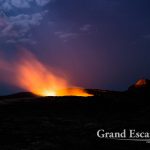

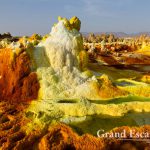
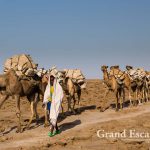
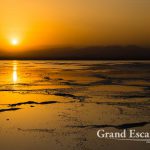









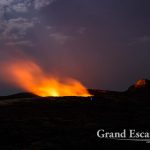
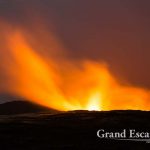
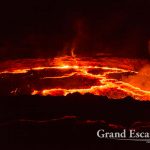
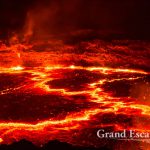
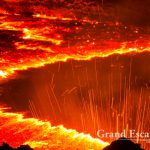

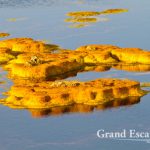
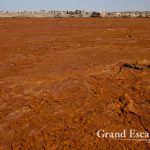

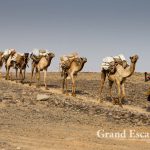
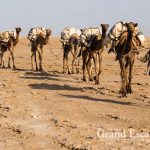
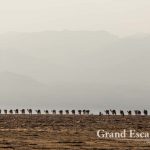
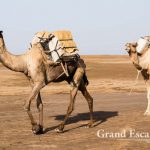
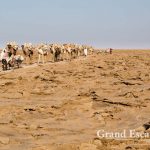
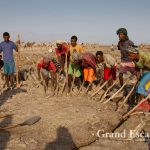
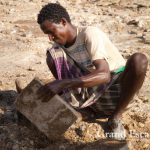

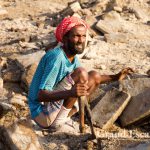
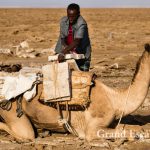
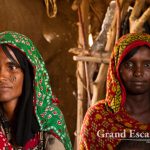

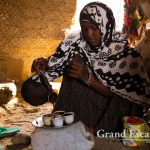

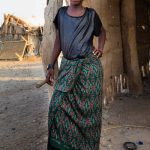
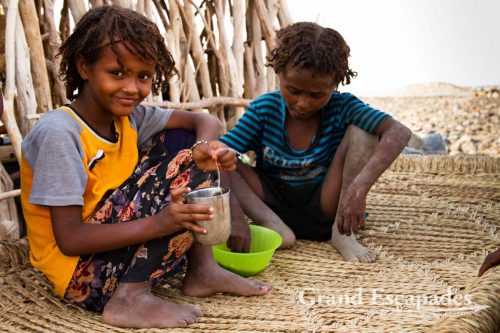
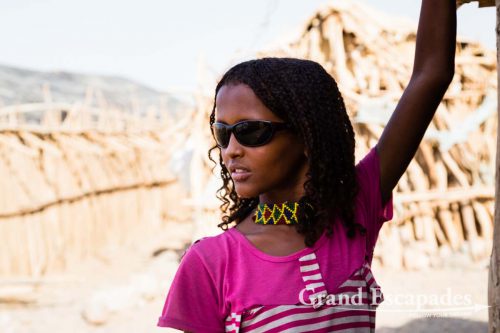
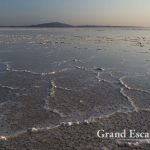
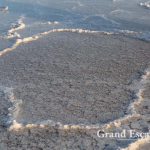
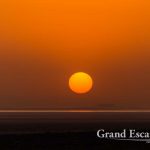
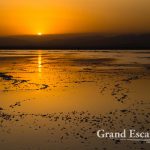
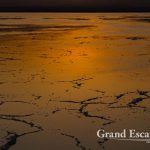
So detailed and such a interesting place I’ve read about quite a lot recently … I guess you are right how it is getting more popular! The cost is high but for something this unique … Wow! Maybe next year (I saw the “Blue Lava” in Indonesia this year which just made me want more geological action!)
Hi Jordan,
I had never heard of the Blue Lava, but I must admit I do not know Indonesia at all… Well, another travel destination on the list 😉
Yes, Erta Ale & the Danakil are really worth it.
Cheers, Gilles
Great piece 🙂 This place has been near the top of my wishlist for years — so cool that you’ve been not once but twice! It’s sad to read that Dallol is no longer what it was though.
Thanks Sarah!
The Danakil Depression should stay on your list !
Cheers, Gilles